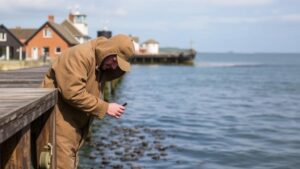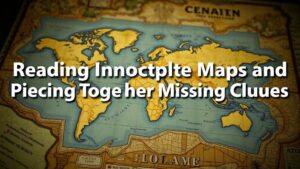The Caribbean Pirate Relics: Mapping Old Pirate Strongholds to Recover Loot in the Lesser Antilles
The Caribbean Pirate Relics: Mapping Old Pirate Strongholds to Recover Loot in the Lesser Antilles
The Caribbean Sea has long been a stage for intrigue, adventure, and piracy. The era of the pirates, spanning from the late 1600s to the early 1700s, transformed the Lesser Antilles into a playground for infamous figures such as Blackbeard, Henry Morgan, and Captain Kidd. Their exploits left behind a treasure trove of relics and stories deeply rooted in the history of the Caribbean. This article seeks to map these historical strongholds, examine their significance in the context of recovery efforts, and explore the lasting impact of these legends on modern-day Caribbean culture.
The Historical Context of Caribbean Piracy
The Caribbean was a critical area during the age of sail, serving as a converging point for trade routes between Europe, Africa, and the Americas. From the 16th to the 19th century, European powers like Spain, France, and England vied for control over these waters, often leading to conflict. Piracy emerged as an informal but critical response to this rivalry. According to historical records, more than 20,000 pirates operated in the Caribbean Islands, seeking valuable cargo, primarily gold, silver, and sugar.
Identifying Old Pirate Strongholds
Throughout the Lesser Antilles, several islands emerged as notorious pirate strongholds, each showcasing unique geographical features that facilitated piracy. Key locations include:
- Tortuga: Located off the coast of Haiti, Tortuga served as a base for buccaneers in the 17th century. Its natural harbor allowed for easy access to trade routes.
- Port Royal: Once dubbed the richest and wickedest city on Earth, Port Royal in Jamaica was a notorious hub for piracy, featuring taverns and brothels frequented by pirates.
- Saint Martin: This island acted as a refuge for many pirates, offering secluded coves and a strategic vantage point for tracking merchant ships.
Each of these locations plays a vital role in understanding the operational methods of pirates, whose strategies often incorporated secretive dealings and alliances with local governments.
Mapping the Relics of Piracy
Recovering loot and relics has become a fascination not only for treasure hunters but also for archaeologists and historians. Efforts to map pirate relics have combined both traditional research techniques and modern technology. Techniques incorporating Geographic Information Systems (GIS) allow researchers to visualize historical pirate activities and correlate them with geographical features.
An excellent example of this is the recent exploration of shipwrecks around the Caribbean. In 2021, archaeologists identified the wreck of the Fénix, a Spanish treasure galleon that sank in the 17th century, using sonar mapping technology. exploration yielded over 40 artifacts, including gold and silver coins, contributing to our understanding of the treasure trade during that era.
The Role of Modern-Day Archeology
Modern archaeology plays a pivotal role in uncovering the past while mitigating the risks associated with treasure hunting malpractice. Organizations such as the Institute of Nautical Archaeology have undertaken systematic excavations in collaboration with local governments, ensuring that historical artifacts are preserved rather than plundered.
Case Studies in Recovery Efforts
One of the most compelling case studies is the ongoing excavation at the site of the 17th-century shipwreck off the coast of Saint Lucia. Divers have worked in collaboration with historians to recover artifacts that reveal details about the lifestyle of pirates and their interactions with local populations. recovery of a cannon, personal belongings, and navigational tools helped paint a clearer picture of everyday life at sea.
Challenges and Ethical Considerations
Despite the romanticism surrounding pirate lore, the recovery of historical artifacts poses ethical challenges. Questions arise regarding ownership, cultural heritage, and the treatment of artifacts. For example, the provenance of artifacts recovered may be tied to colonial exploitation. Museums are increasingly tasked with ethical considerations regarding exhibits that reflect this complex history.
Conclusion: The Ongoing Legacy of Pirate Culture
The legacy of piracy in the Caribbean is multi-layered, intertwining historical facts with folklore that still captivates the public. Tours, historical reenactments, and literature continue to keep the stories alive, contributing to Caribbean culture and tourism. For a region that has seen both grandeur and havoc, revisiting these pirate strongholds and relics offers valuable lessons about economics, ethics, and shared history.
Actionable takeaway: For those interested in exploring this rich history, consider participating in organized archaeological tours or supporting local historical societies that focus on the preservation of pirate heritage in the Caribbean. Such initiatives are essential in maintaining the delicate balance between recovery and respect for the historical narrative.


